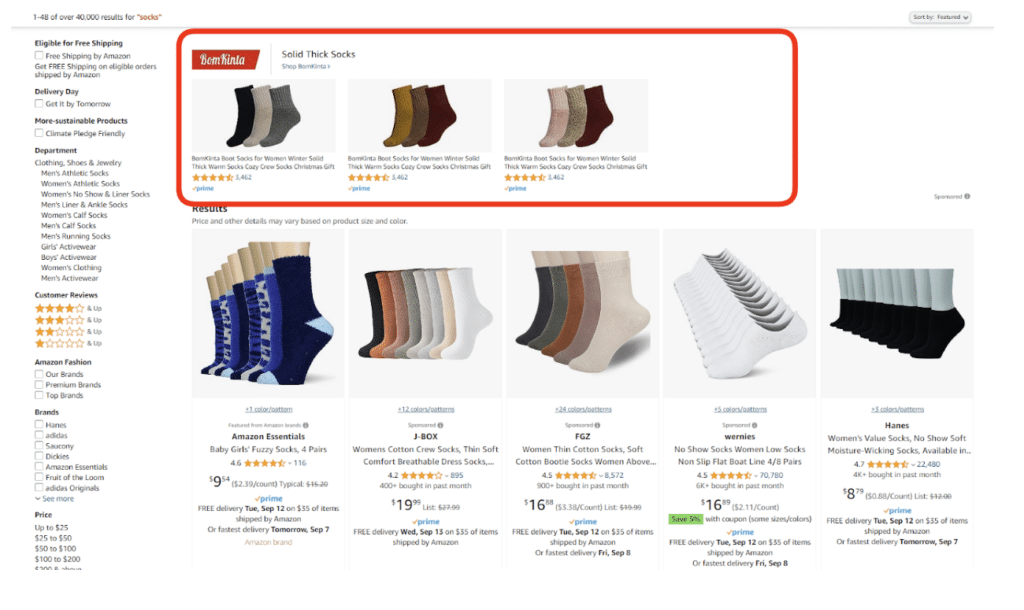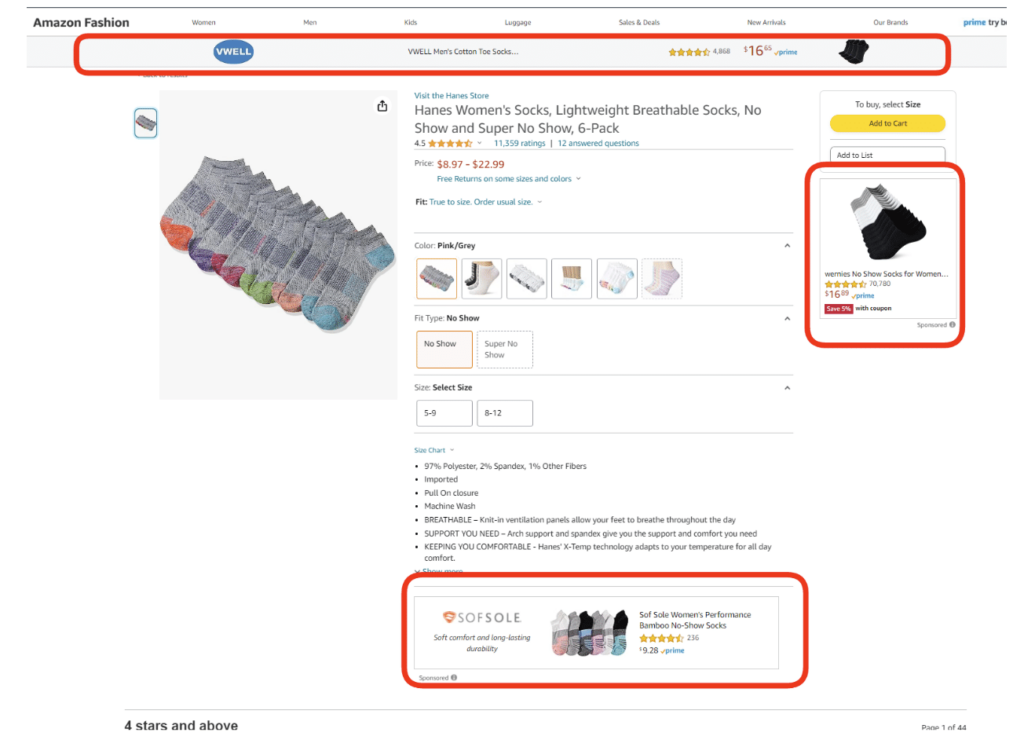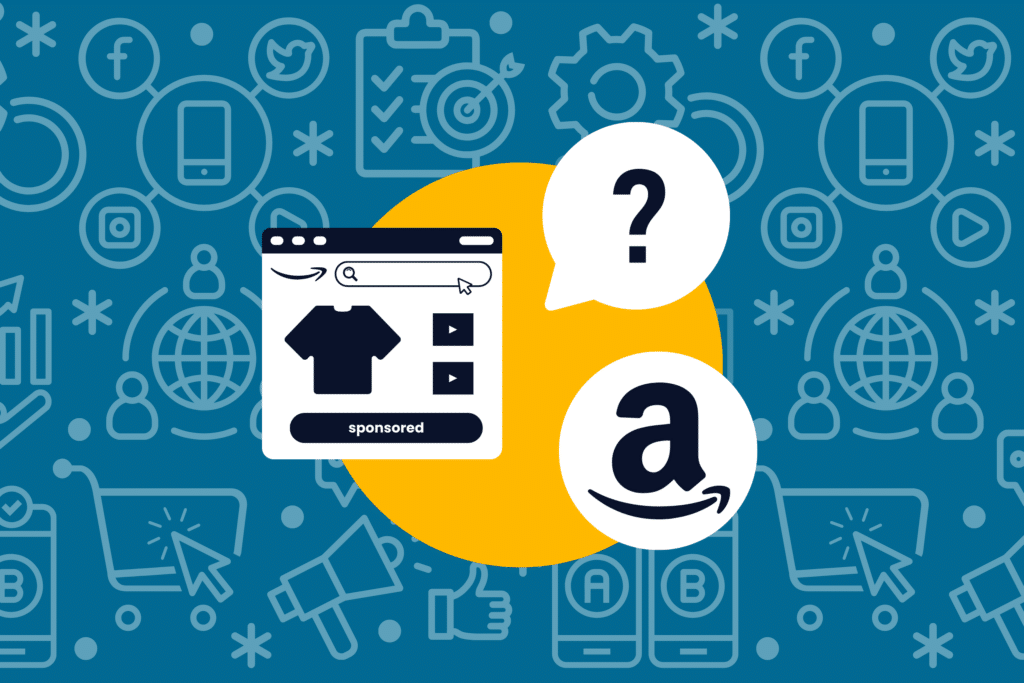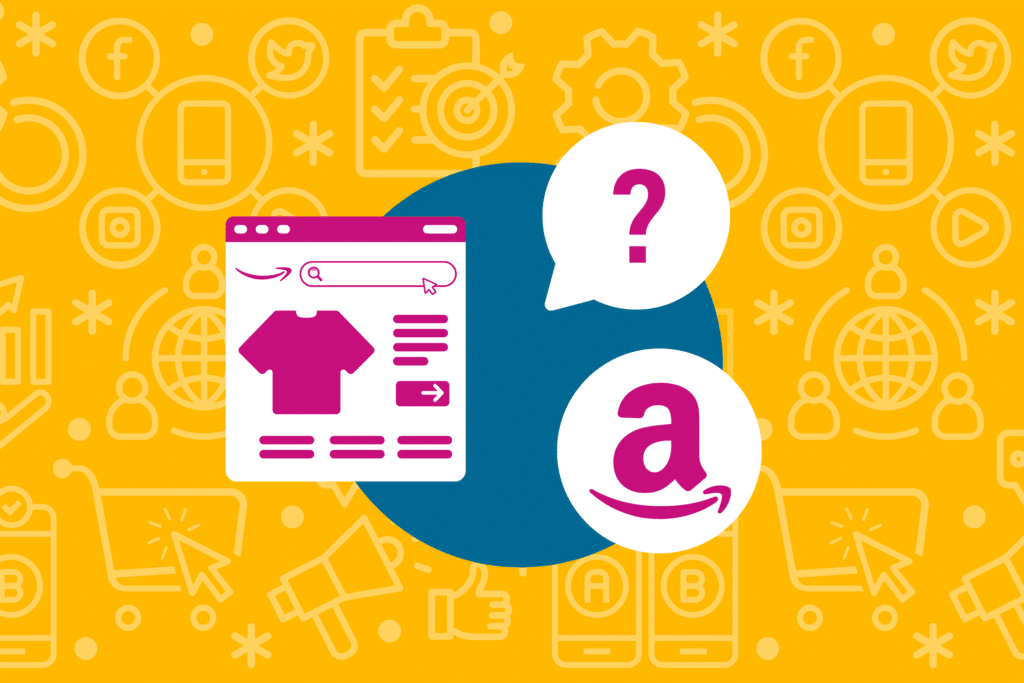We use our expertise to answer your question.

Amazon Sponsored Products

Overview
Sponsored Products campaigns are a staple across all Amazon advertisers we work with. They are very similar to other product ad formats available on other platforms (think Google Shopping), as you are able to define the mix of bid, budget, product, and targeting needed to ensure you are targeting appropriate searches across Amazon. Sponsored Products ads will only serve for items that you currently win the Buy Box for—so they will not waste any budget advertising items that you are unlikely to win the sale for (there is one exception to this covered below).
Benefits
- You have control over targeting all the way down to the match type, target type, keyword, and ASIN/product target level. This is a tremendous level of control available.
- Automatic targeting allows you to identify new ASIN targets and search terms that might work well for your business.
Considerations
- With such granular targeting and bidding capabilities, it is important to avoid a campaign structure that is segmented beyond a level that your data supports.
- If you advertise a fitment (e.g. a shoe in size 12), then if the user selects a different size on the product page and you do not win the Buy Box for that new fitment, your spend was effectively wasted. For sellers with fitments, we do suggest an approach that accounts for this challenge.
- There are no automated bidding strategies currently available for Amazon Ads, so implementing a process for bid optimization is critical to ensuring you are profitable.
Recommendations
- Take advantage of placement modifiers—we observe that top-of-search placements monetize at the greatest rate for most advertisers on Amazon.
- Segment your account to an appropriate level. For some advertisers, single keyword and product campaigns might make sense, but for many it does not. Segment to a deeper level where data is plentiful, and condense where it is not.
- Make use of automatic targeting to identify new keywords and ASIN targets—harvest these into manual campaigns.
- Avoid budget caps—if you are profitable, it is rarely advisable to cap budget.
- Make use of negative keywords.
Amazon Sponsored Brands

Overview
Sponsored Brands campaigns currently offer three types of ad formats for eligible advertisers: Product collection, store spotlight, and video. A well-maintained store page is a critical component to success here. While we see success monetizing traffic with all of these ad types, we recommend prioritizing product collection and video formats.
Benefits
Maintain visibility for all of the same searches that perform well in Sponsored Products (have two ads on the same page rather than just one).
Considerations
- The attribution model for Sponsored Brands campaigns is not the same as Sponsored Products—be aware of the change here as it is more generous.
- Bids are currently defined at the keyword level, which might be too much segmentation for many advertisers.
Recommendations
- Align keyword themes with store content/pages to provide a suitable landing page for users that do not click-through to a product page.
- It can be easy to overly segment a campaign if incorporating multiple match types per keyword—we suggest avoiding redundancy in match types (e.g. one keyword targeted across three match types) as you fragment data, slowing down the bid optimization process for each keyword.
Amazon Sponsored Display

Overview
Sponsored Display campaigns currently offer two targeting types (contextual and audiences) and two bidding types (CPM or CPC). Sponsored Display campaigns also have the most generous attribution model of any campaign type on Amazon. Sponsored Display campaigns will attribute the sale of any product from your brand back to your campaign, regardless of seller, if the purchaser had clicked (or viewed) your Sponsored Display campaign within 14 days. This is quite important, as you may be crediting revenue from resellers back to your campaigns.
Benefits
- You can target display ads to users who previously purchased your product or similar products, viewed your product or similar products, etc.
- Through contextual targeting, you can target ads to a single ASIN page, such as that of a competitor.
Considerations
- Be aware of the attribution model and the implications of this model, as it could easily contribute to a massive overspend.
- The bidding model (CPC or CPM) has a direct impact on campaign attribution. CPM bidding will adjust your attribution model to post-view, whereas CPC is post-click.
Recommendations
- We suggest starting with audience targeting, as we tend to see the most success with Sponsored Display across remarketing audiences. Other audience types tend to perform poorly and may not be viable for you.
- We suggest using a CPC model as it allows for a less generous attribution model with greater ability to control profitability. While there is nothing inherently wrong with a CPM model, it is probably too generous of a model for most advertisers and might inflate reported results. If you value incremental value, a CPC model is likely the better option. Both have their uses, though.








